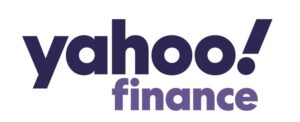 By Amy Ling Schaffer
By Amy Ling Schaffer
One of my biggest hesitations for attending school in the middle of Missouri was knowing there would be limited options for ethnic food. I am from Kansas City, Mo., where authentic Chinese, Indian, Vietnamese, Japanese and Caribbean food are all within five miles of my house.
Fathoming living on burgers, fries and pasta diet chilled me, but ultimately, I chose the school for its journalism program, knowing I would just have to miss the readily available international cuisine. I could not have predicted how my longing for ethnic food would affect my spending in college.
Turning to off-campus dining options to fill my fix, I quickly found my favorite international stops in downtown Columbia: Hi Tea, a bubble tea shop, and Big Mama Chim’s, a Thai restaurant with the best flavored dishes in town. I have spent $79.84 at Hi Tea and $128.58 at Big Mama Chim’s since moving to college. In this, I have joined the 87% of American millennials who drink tea, according toan article by The New York Times, and contributed to the $2.4 billion bubble tea industry, according to Allied Market Research.
My easiest solution would be to resist the temptation to go out and buy this food when I have a perfectly sufficient on-campus dining plan. Unfortunately, the reality is that budgeting the money I earned during high school is harder than I anticipated. My personal finance class in high school taught me that 10% of my money should be spent on food, and 10% should be spent on entertainment and leisure.
However, those two categories together make up 100% of my current spending. I do not use my spending money on new clothes or other material objects, and my parents are funding my college tuition and housing fees. I recognize I am very privileged in not needing to budget for those things.
The large remaining category then becomes food, so buying bubble tea once or twice a week does not feel immediately harmful. Given the fact I have spent almost $80 on bubble tea alone, it is obviously harmful in the long run. The lesson to learn is to buy the things that bring you joy, but moderation is everything.
If my favorite drink from Hi Tea costs $6.95 after tax and 20% tip, I can treat myself to it on a week when I am not spending money on anything else. If I am tempted to buy it on a day that I spent $30 filling my car with gas and treating my friends to coffee, I should resist the bubble tea urge.
Starting now, I will only say “yes” to getting bubble tea with my friends every other time they ask me. Though this is a rather trivial goal, small boundaries like this can help me to get a grasp on mindless spending and hope to be smarter with my money in the future.
Schaffer is a sophomore at the University of Missouri School of Journalism.





